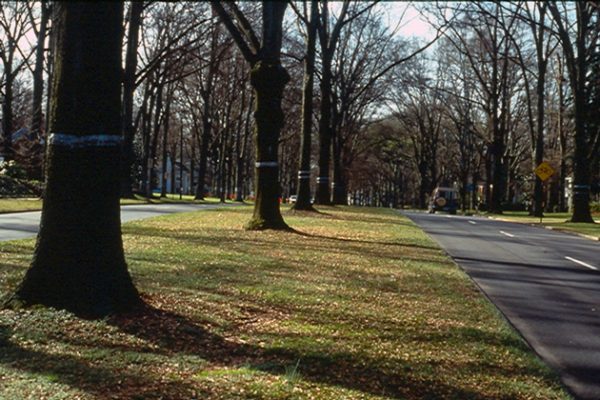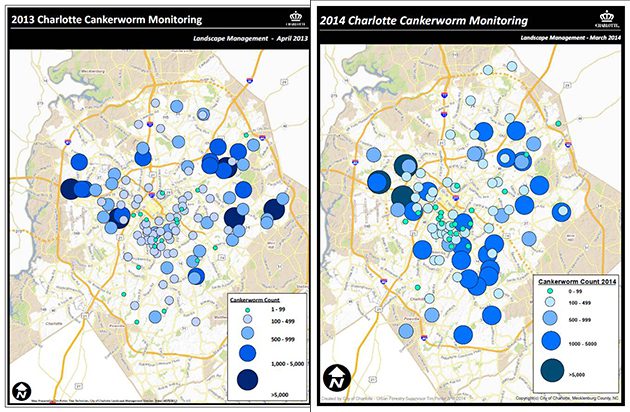What areas have worst cankerworm problems? See new maps

Although the city arborist says Charlotte’s trees are healthy enough, for now, that no more aerial spraying to kill cankerworms is planned for next spring, the city’s infestation with the leaf-munching caterpillars remains high.
Learn More
Click here to see all of City Arborist Don McSween’s presentation.
At a City Council meeting Monday, City Arborist Don McSween displayed maps of cankerworm infestations throughout the city. The maps compare the number of cankerworms caught in several traps throughout the city in spring 2013 and spring 2014. Counts in south Charlotte are higher this year, while fewer cankerworms are showing up in north and east Charlotte
Why are cankerworms a problem? After mating in December, the wingless female moths climb trees, where they lay eggs on the trees’ highest twigs and branches. In the spring, the green cankerworms hatch and begin eating the leaves. Over time, the loss of leaves can weaken trees and make them more susceptible to disease, drought and other insects. Once hatched, the wind can move the small cankerworms from tree to tree.
Charlotte’s cankerworm population has increased over the past several years. McSween said “natural controls,” like birds and beetles which eat cankerworm larvae, have not been sufficient to keep the cankerworm population under control. The city recommends “banding” trees with a type of sticky substance that traps the cankerworm moths as they crawl up the tree in wintertime.
The city banded 6,000 willow oaks last fall and provided about $17,000 in neighborhood matching grants to assist neighborhoods in banding their trees, but banding on private property is inconsistent.
Charlotte has conducted three aerial sprays since 1992. The most recent, in 2008, cost $1.5 million and covered 67,000 acres.
